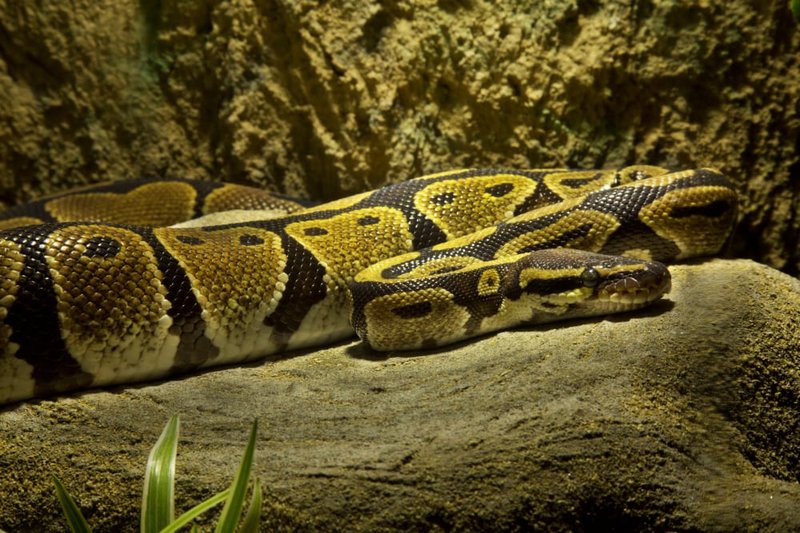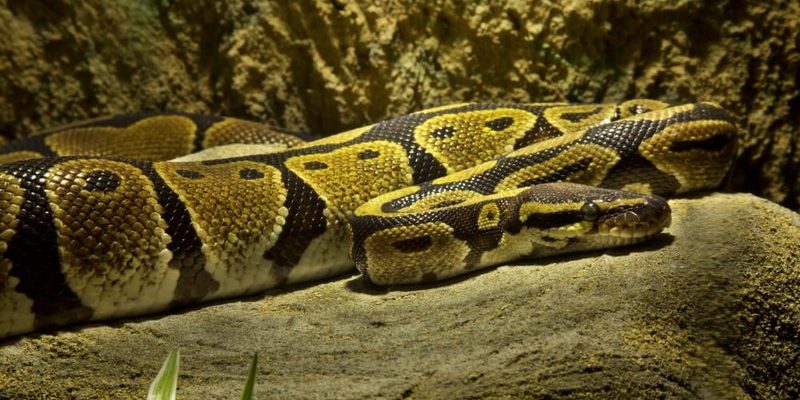
So, why should we care about how the ball python survives? Beyond their beauty and uniqueness, these snakes play a vital role in their ecosystems. Understanding their survival tactics can teach us about resilience and adaptability in nature. Here’s a deeper look into the fascinating world of ball pythons and their ability to withstand tough environments.
Natural Habitat of the Ball Python
Ball pythons are native to the humid grasslands, savannas, and forests of West and Central Africa. Their habitat ranges from open woodlands to grasslands where they can find ample cover. Honestly, this variety is crucial for their survival. In these environments, they rely on the cover of grass and bushes to hide from predators and ambush their prey.
In these habitats, temperatures can fluctuate widely, sometimes soaring during the day and dropping at night. This stark temperature change is where the ball python’s incredible adaptability shines. They’ve developed the ability to regulate their body temperature by basking in the sun when it’s warm and seeking shade or burrowing into the ground when it’s too hot. This behavior, called thermoregulation, is essential for their overall health and functioning.
Moreover, their environment offers a rich diet. Ball pythons primarily prey on small mammals, like rodents, which are abundant in their natural habitat. This availability of food plays a substantial role in their survival. But here’s the thing: their survival strategies don’t stop with just hunting; it’s all about how they make the most of their surroundings.
Adaptation to Harsh Conditions
When faced with extreme weather or scarce resources, ball pythons show remarkable resilience. They can go weeks without food, allowing them to endure periods of scarcity. This isn’t just luck; it’s a survival strategy that allows them to navigate through harsh conditions. Imagine trying to find food when it’s almost nonexistent—it’s a tough situation, but these snakes have mastered it.
During dry seasons or in areas where water is hard to find, they can adapt their behavior. They tend to stay in burrows or shaded areas during the hottest parts of the day, coming out during cooler hours, like dawn or dusk, to hunt. This nocturnal behavior not only helps them avoid the heat but also increases their chances of encountering prey that is more active during these times.
Additionally, ball pythons can tolerate a range of environmental temperatures. They can thrive in lower temperatures compared to many snakes, which means they can often be found in less favorable habitats where other reptiles might struggle. This capability can be a game-changer in unpredictable environments.
Hunting and Feeding Strategies
Ball pythons are constrictors, meaning they wrap around their prey to subdue it rather than striking quickly. This strategy is quite clever, particularly in harsh environments where energy conservation is key. By using this method, they minimize energy expenditure—a vital aspect when food is scarce.
You might be wondering how they track down their next meal. Ball pythons have an excellent sense of smell, aided by their forked tongues. They can detect scents in the air and on the ground, helping them locate prey with impressive accuracy. It’s like having a built-in GPS system that guides them to dinner!
When it comes to eating, they have a unique feeding pattern. They prefer to eat larger meals less often because it helps them conserve energy. After consuming a meal, they can go several weeks without eating again, which is essential for survival in the wild where food availability can be sporadic.
Defense Mechanisms
Despite their gentle nature, ball pythons are not without defenses. When threatened, they can employ a few clever tactics. The first line of defense is their ability to remain still and camouflaged among the leaves and brush, making it hard for predators to spot them. It’s almost like playing hide and seek, but they’ve mastered the hiding part!
If a predator does get too close, they may resort to curling up into a tight ball. This behavior is where their name comes from! By doing this, they protect their vital organs and look less like a tempting meal. It’s a smart move—many potential threats might lose interest when a snake looks less like a snack.
Lastly, ball pythons can also release a foul-smelling musk when frightened. This isn’t just for show; it can deter predators and give the snake a moment to escape. All these defenses speak to the ball python’s adaptability in harsh conditions, allowing them to survive and thrive despite the odds.
Breeding and Reproduction
Breeding adds another layer of resilience to the ball python’s story. During the mating season, which often occurs in winter, females will seek out males. To ensure the survival of their species, they lay eggs in a secluded area, often in a pile of decaying vegetation where warmth is generated. This choice is critical, as the warmth helps the eggs incubate and hatch during the rainy season when food is more plentiful.
Once the eggs hatch, the baby ball pythons are on their own. They are born with instincts already fine-tuned for survival. They must quickly learn to hunt and hide from predators, facing challenges right from the start. This independence is vital for their survival in harsh environments, as it prepares them for life in the wild.
Here’s a fun fact: female ball pythons can store sperm, allowing them to fertilize eggs later, even after mating just once. This adaptation is a smart strategy for maximizing their reproductive success in environments where males may not always be available.
The Role of the Ball Python in the Ecosystem
Ball pythons are not just survivors; they play a crucial role in their ecosystems. By controlling rodent populations, they help maintain balance within their environment. Without them, the numbers of small mammals could explode, leading to overgrazing and habitat degradation.
Moreover, their presence in the food chain makes them an important food source for larger predators. Birds of prey, larger snakes, and even some mammals rely on ball pythons as part of their diet. This interconnectedness emphasizes how vital they are for ecological stability.
In addition, their adaptability and survival strategies can inspire conservation efforts. By understanding how ball pythons thrive in harsh environments, we can apply similar thinking to protect vulnerable species facing climate change and habitat loss. It’s a reminder that resilience exists in nature and we can learn from it.
The ball python showcases a remarkable ability to adapt and survive in harsh environments. From their clever hunting techniques to their impressive defense mechanisms, these snakes can thrive where many others cannot. Their journey through life teaches us valuable lessons about resilience and adaptability, proving that survival is possible, no matter the odds.
As we learn more about these fascinating creatures, it becomes clear just how vital they are to their ecosystems. Protecting them and their habitats can lead to healthier environments for all species, including ours. So the next time you hear about a ball python, think of its incredible story of survival and the lessons it offers.

